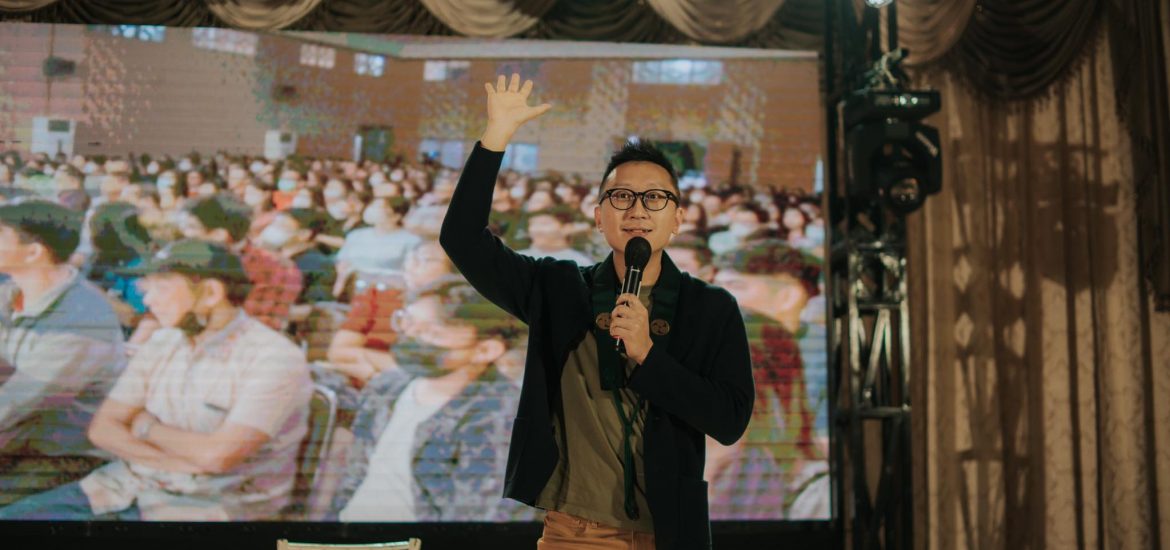I met Indonesian-born Buddhist teacher Hendrick Tanuwidjaja a decade ago in 2013, at a Buddhist convention in Surabaya. Just a few years later, this gentleman earned what he saw as his true calling: a certificate in Mindfulness-Based Stress Reduction (MBSR) at UC San Diego School of Medicine, qualifying him to found MindfulnessHub Indonesia. His latest milestone in his religious calling is being ordained as a lay novice priest in the Shingon and Tang Mi lineage under the Mahabodhi Sangha, Singapore. He continues his studies in Socially Engaged Buddhism, which was initiated by Joan Halifax Roshi of Upaya Zen Sangha, and MMTCP training by Jack Kornfield and Tara Brach. This month in October, he is releasing his first book, Soul of Borobudur: Filosofi Mandala Chakrawarttin, a celebration of Indonesian Buddhism and the principles of leadership that a cakravartin (wheel-turning monarch) embodies.
It has been a long time coming: in our first interview since we met at Surabaya, he reflected on his life prior to his new vocation. “I discovered Buddhism when I was still a teenager. It was a very enjoyable time for me: I delved deep into the study of Buddhism every time I came home from school. Because I liked fantasy films and games like Lord of The Rings and Harry Potter, I was very curious about Vajrayana, even though at that time I more often attended Theravada services. I enjoyed writing about Buddhism in online discussion forums until I eventually became the executive editor of the Sinar on both the writing and design of the magazine,” he said.
“As you know, I helped curate and design 2013’s Buddhist Festival in Surabaya. This national-scale event invited speakers and Buddhist communities from abroad and successfully captured the interest of many young people. I was also active as one of the head of the Young Buddhist Association of Indonesia (YBAI), helping with the Vesak Festival in Surabaya and organizing the Mindful Project conference at that time.”
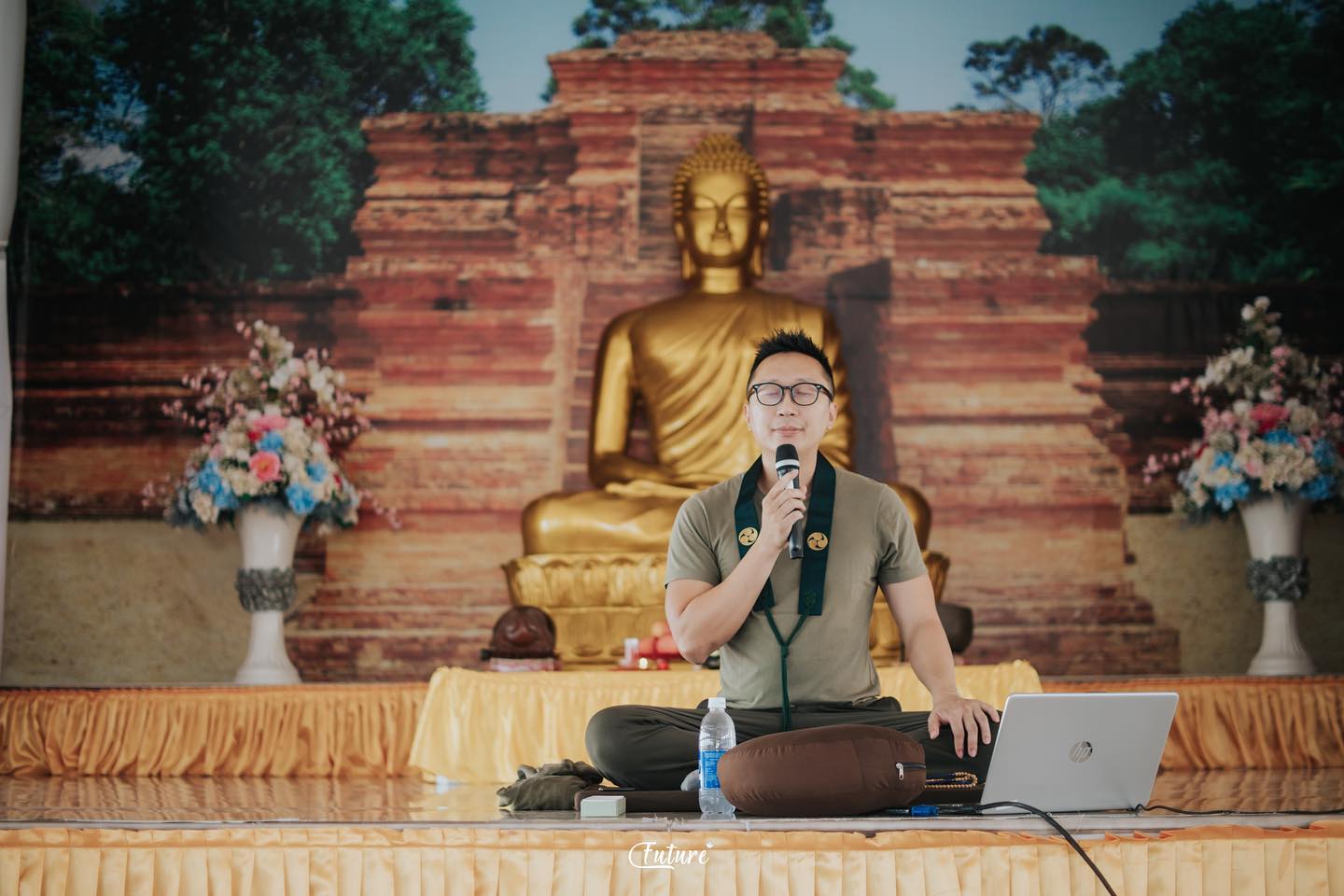
In 2017, Hendrick experienced symptoms of depression, panic attacks, anxiety attacks, insomnia, and even suicidal thoughts. But with the guidance of his teacher and seniors in the Dharma Drum Mountain (DDM) community of Indonesia (which is one of its most prominent schools of Chan), he managed to overcome depression. It was during this time that his teacher Ven. Guojun asked him to participate in an 8-week MBSR program in Singapore. “Within just two years, I fully recovered, and I even felt a level of happiness I had never experienced before my depression. I learned a lot about myself. Later on, my teacher supported my interest in professional training for MBSR and MBCT, so I eventually underwent teacher training for both of these programs.”
Hendrick began teaching MBSR and MBCT at the end of 2019, starting with small groups and eventually guiding nearly 20 groups online and in person at various educational institutions and corporations. MindfulnessHub Indonesia introduced Mindfulness-based Interventions in Indonesia for the first time, and translated the classic Full Catastrophe Living by Dr. Jon Kabat-Zinn into Indonesian.
The fact that it has taken so many years to translate Full Catastrophe Living is an indicator of Indonesian Buddhism’s peculiar position on the global stage. Despite rarely appearing in the news, there is actually a thriving ecumenical community in the country. Not only that, but over a millennium ago, Indonesia was one of the main centers for the study of Buddhism, playing a pivotal role in the development of Buddhism worldwide. Hendrick was particularly inspired by the Borobudur Temple in Muntilan, Central Java. To this day, it remains the largest extant Mahayana complex in the world.
“Initially in my research, I was interested in documenting and compiling data about the bhikshu (Buddhist monks) who sailed through Indonesia while traveling back and forth between India and China, including their influence on Borobudur. At one point, I met the founder of Anantarupa Studio, who created Indonesia’s first MOBA (Multiplayer online battle arena)game called Lokapala. As it turned out, he shared my interest in Borobudur, which he based the concept of his game on,” Hendrick told me.
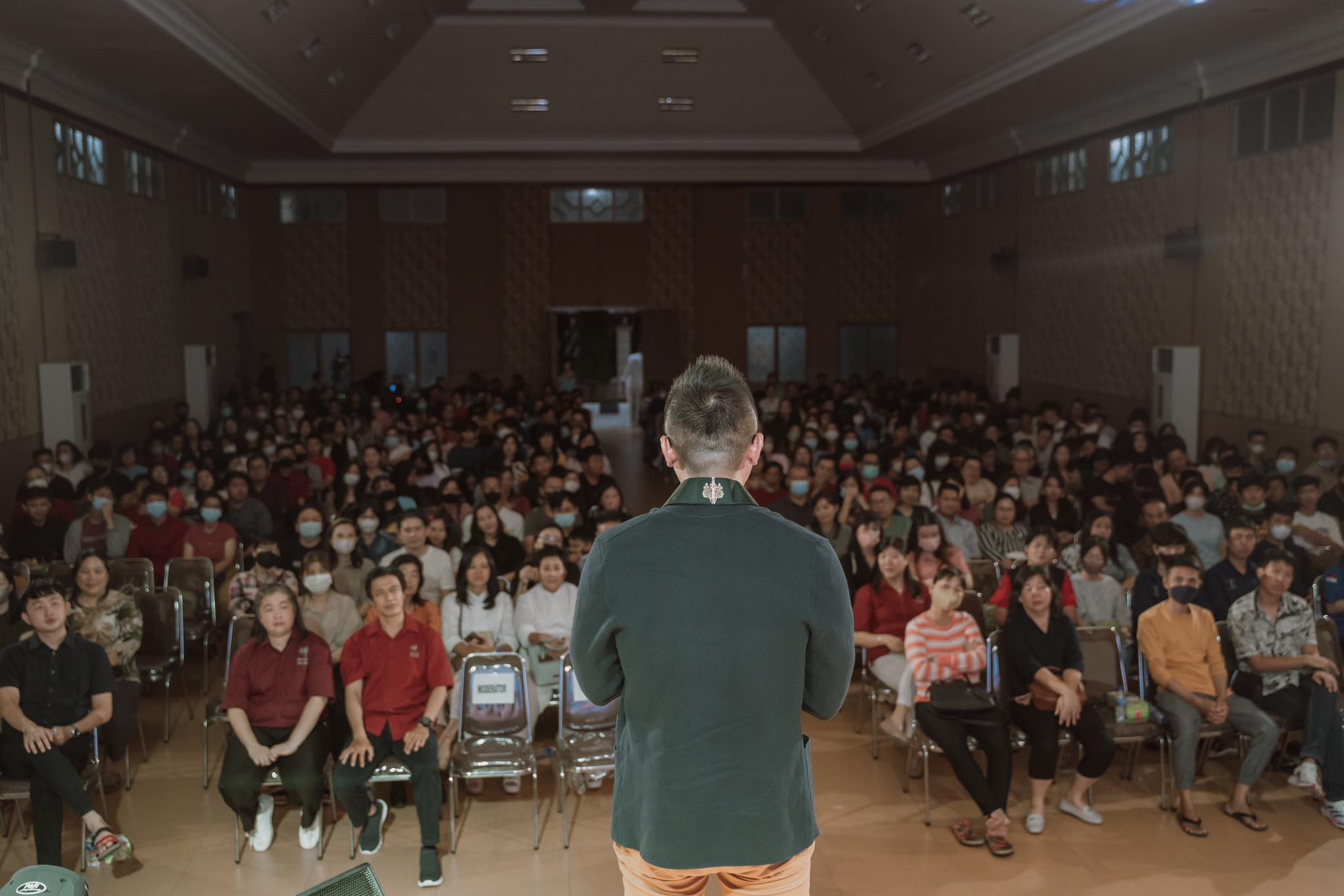
“For months, we engaged in discussions on bridging the past and the future. From these discussions, I decided to shift my writing’s perspective to that of Borobudur itself. As I delved into new research in various literature, I unearthed many previously unexplored findings. These discoveries left me in awe. Eventually, I stumbled upon something very intriguing: it turns out that Borobudur was constructed with the purpose of validating the presence of the chakravartin in Indonesia. This chakravartin, known to the leaders of this country as Ratu Adil Herucakra, is believed to bring prosperity, peace, and justice to Indonesia in the future, a utopia that resides in the minds of the Indonesian people.”
The chakravartin ideal is therefore integral to the “Borobudur philosophy.” Hendrick tells me, “Strong leadership was needed to complete a grand structure like Borobudur, especially in ancient times. These leaders didn’t hesitate to incorporate metaphors of their leadership into the architecture of that era. I delved deeply into what kind of leadership prevailed during Borobudur’s construction. This would lead us to find the answers to why Borobudur was built and what its purpose was.”
As Hendrick’s research reveals, Borobudur was constructed by the Sailendra Dynasty, which translates to “Mountain King.” According to Mahayana sutras such as the Avatamsaka Sutra and Prajnaparamita Sutra, the ten mountains in Buddhist cosmology represent the bodhisattva realms and the levels of the chakravartin and devaraja. Hence, Borobudur now consists of ten levels. “Decades before Borobudur was built, imperial Chinese monks like Vajrabodhi and Amoghavajra had spent some time on the island of Java. Their teachings still endure through the Shingon lineage in Japan. One of their disciples was Ajnagarbha, who hailed from Java. He sailed to China to study Vajrayana under Huiguo, a disciple of Amoghavajra. While there, Ajnagarbha wrote a manuscript about the empowerment of a chakravartin.”
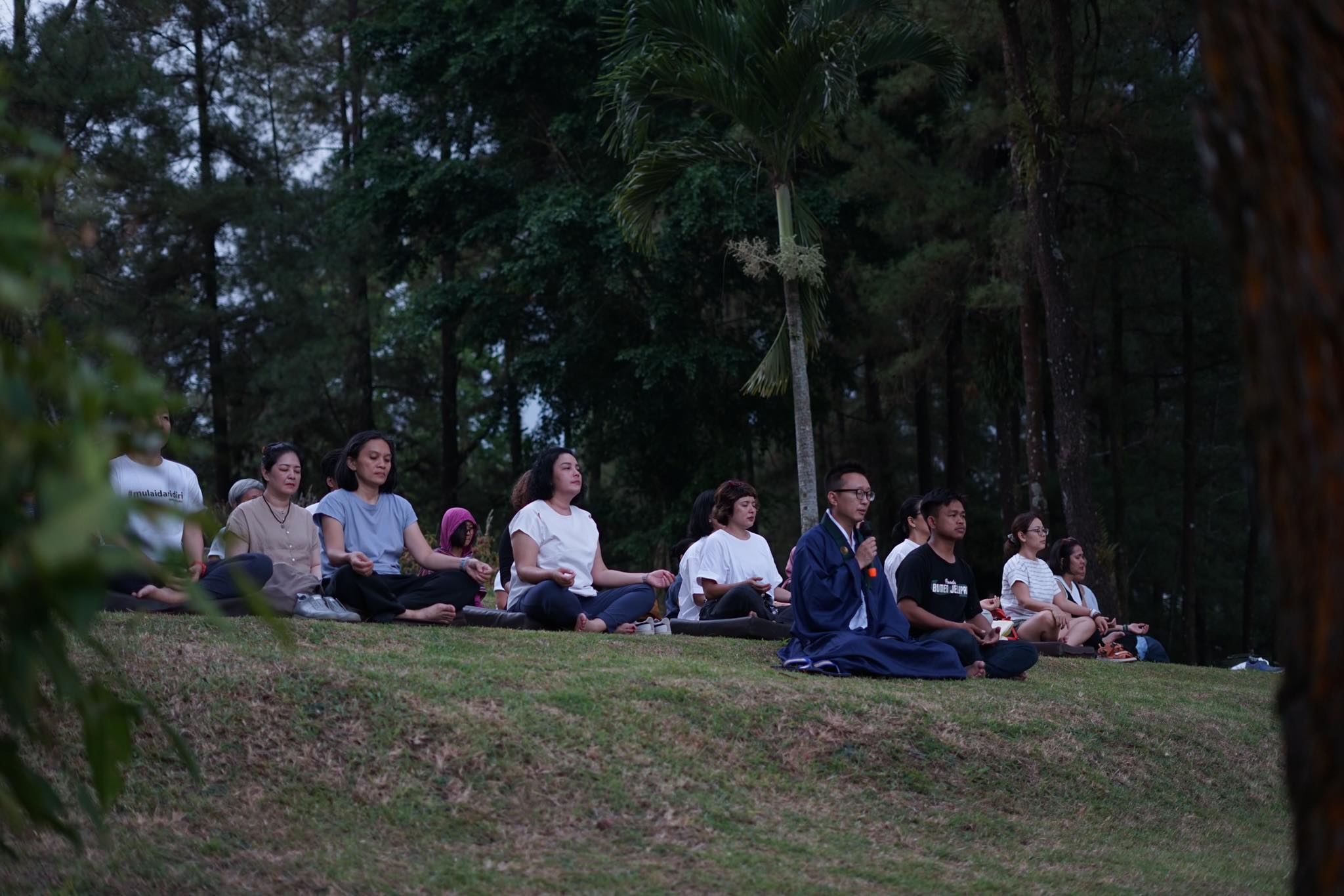
Hendrick quotes Hiram Woodward in theorizing that Ajnagarbha may have returned to Java and been involved in the construction of Borobudur. This discovery becomes fascinating when understanding that Borobudur was meant to depict the four levels of the chakravartin and the ten levels of the devaraja. Was this structure indeed meant for the empowerment of Javanese kings as chakravartins?” he wonders.
“Consider how often Javanese literature was inspired by Sanskrit texts. In the Javanese version of the Ramayana, a chakravartin is said to possess eight leadership qualities held by the eight Lokapala deities: Indra, Yama, Varuna, Vayu, Agni, Nrtti, Kubera, and Prthivi. Often in Shingon mandala diagrams, these eight Lokapalas act as guardians, circling the Buddha mandala. Borobudur is guarded by these Lokapalas. Furthermore, there are hints in my book discussing how the great monks who once passed through or studied in Indonesia indirectly propelled civilization and technology abroad, in a timeline that had previously been overlooked.”
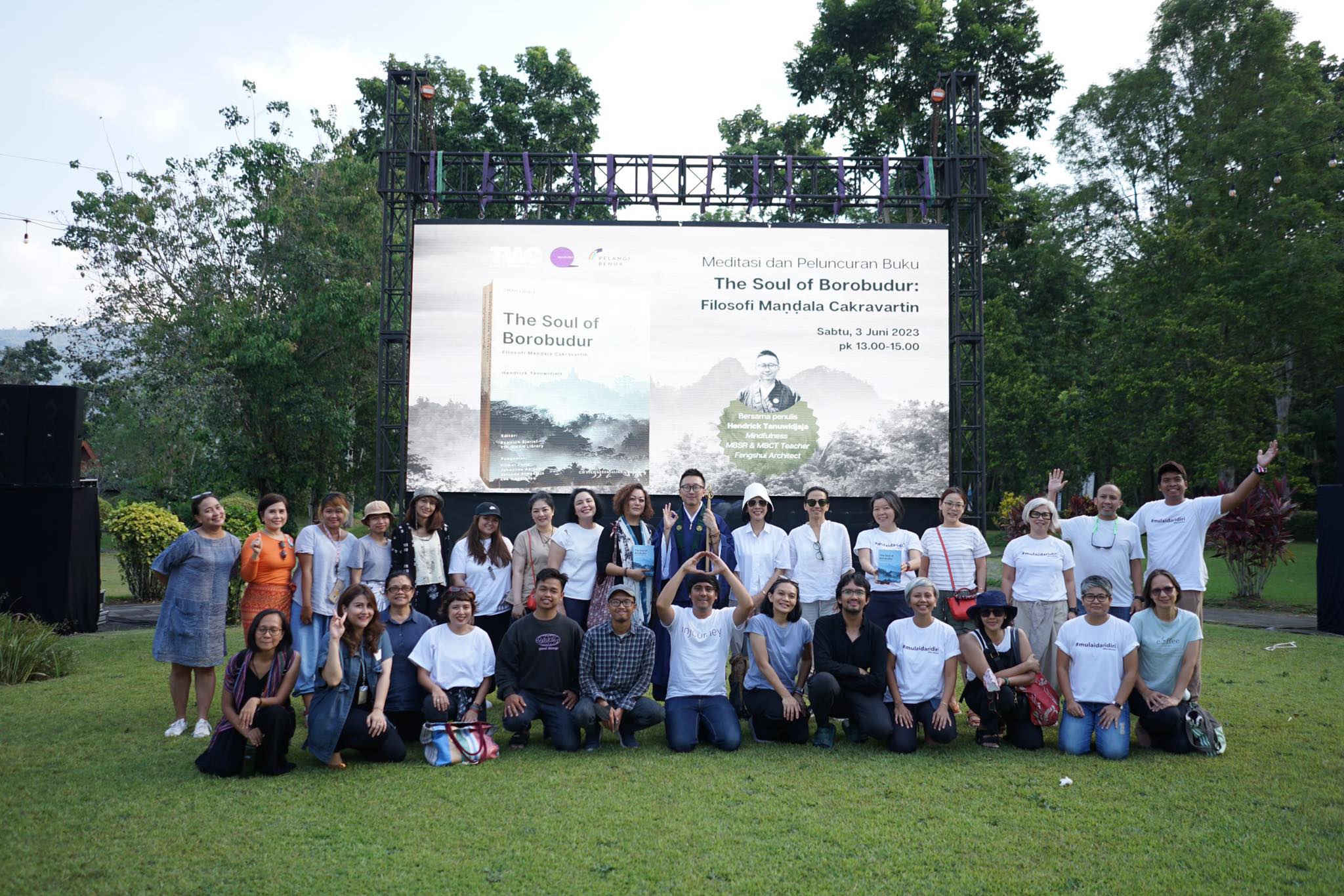
Hendrick feels that this heritage is highly relevant to how Indonesian Buddhists understand themselves today. Ever since independence, Indonesia has considered itself a multicultural society with a complex patchwork of diverse traditions. “The Indonesian government’s desire to make Borobudur a religious pilgrimage center holds even more significance when we rekindle the spirit of chakravartin leadership through this temple. In the years 2022 and 2023, Indonesia hosted the G20 and ASEAN forums, inviting world leaders to attend. This can be likened to the chakravartins from various nations considering Indonesia as a noteworthy center. We do not need to wait for a chakravartin in the future. The future of Indonesia is determined by all who live in this country today. All of Indonesia’s people can become Ratu Adil or chakravartins, as the Avatamsaka Sutra states: “May all beings become Great Wheel-Turning Kings (mahachakravartin).”
In 2045, Indonesia will be celebrating its 100th year of independence. “The spirit of chakravartin leadership, one filled with goodness, peace, love, tolerance, and wisdom, will determine the direction Indonesia takes,” says Hendrick. To me, he would seem to match this very profile of a Buddhist leader. His goals certainly seem to be highly relevant to the future of Buddhism in Indonesia: “I want to develop the learning of Mindfulness-based Interventions in Indonesia and enhance people’s understanding about Borobudur in Indonesia. I aim to write books related to local values that still connected to Buddhism and future technology,” he said, with an eye to AI, digital, and other technology shaping the way we live. He had previously authored Mindful is Mind-less: The Art of Resting in the Storm, which aimed to explain mindfulness to a popular audience. Hendrick believes in popularizing both the spirit of mindfulness and Borobudur, a spirit that invokes the revered and storied past while aligning comfortably with the technological advancements of our era.


